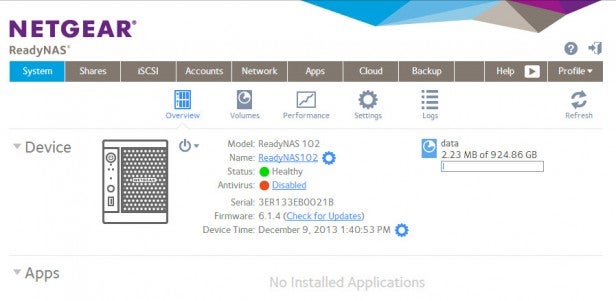

I also tried a backup with compression enabled, but quit it after more than an hour has passed and it was still nowhere done. The test run, which copied a 4.35 GB ripped DVD test folder that I use in the NAS Chart Vista SP1 file copy tests, had a throughput of 3.82 MB/s without compression-not very speedy. Once I saved the job on the QNAP, I had to go back and edit the job again to run it, since QNAP doesn’t provide the equivalent of Synology’s Back Up Now button on the backup job list page. The QNAP also lets you enable file compression to minimize bandwidth, where Synology provides a block-level backup option. But where enabling incremental backup on the Synology also will remove files deleted on the rsync source, QNAP provides a separate enable for this ( Delete extra files on remote destination). I didn’t want to set a backup schedule, but there isn’t an option to just create and save a backup job, so I set a dummy schedule.īoth QNAP and Synology provide enables for incremental backup. You get an error if it can’t, but you don’t get much information to help you determine why the connection failed. Once I had entered all the Remote Destination settings, I clicked the Test button, which checks to see if a connection can be properly made to the rsync target. Instead, I just used the default admin user and password. But I didn’t have to create a user to set access permissions.
GRSYNC READYNAS PASSWORD
Like Synology, QNAP requires using a username and password to access the target folder. But I could create a new subfolder ( qnap_bkup) in the NetBackup directory to keep the backup files separate from my NV+ test backup. Since Synology has set the module name as NetBackup, that’s what I had to enter.

Whatever you enter has to be an rsync module name. The Destination Path (Network Share/Directory) setting name is misleading and the online help text doesn’t make clear that you can’t just enter just any share name here. I selected Rsync server as the Server type instead of NAS server, which is used for QNAP NAS targets. (Synology provides only an rsync enable.)įigure 4: QNAP Remote replication (rsync)Ĭlicking the New button brings up the Add a remote replication job screen (Figure 5). Figure 4 shows the controls, which include separate enables for rsync serving and target and the ability to change the default rsync port number. QNAP refers to its NAS-to-NAS backup feature as Remote Replication, which is found under the System Tools menu. The rsync setups on the Synology and QNAP NASes are similar, but each has features that the other doesn’t. But once that was done, and everything was set up, the Synology to NV+ rsync ran just fine. I won’t show the other tabs, since the Backup folder tab just presents a list of DS109+ shares and checkboxes to select them for backup, the Application tab provides backup selects for the Synology’s MySQL, Photo Station and Blog databases and the Scheduled Backup tab is self-explanatory.Īgain, the tricky part was figuring out the ReadyNAS rsync module name. test, along with the username and password that I established for it over on the NV+. So that’s what I entered in Figure 3, i.e. Once you have enabled rsync for a ReadyNAS folder, its name can be used as the rsync module name. In Figure 3, I’ve circled the key information in this screen that I had to ferret out of the ReadyNAS documentation-the rsync module name. But I’ll use the edit window to show you what I did.įigure 3: Synology Backup to NV+ settings With the NV+ set up, I moved over to the DS109+ and used the Backup wizard to set up the backup. You will need to establish a username and password for the rsync target folder, because the Synology won’t rsync to a public folder. But you can only see the top of the Rsync Password Option portion of the form, which provides room for three users’ login credentials. You can see the setting for Default Access permission at the top and the Share Access Restrictions, which let you limit access to specific hosts / IP addresses for additional security. Clicking on the Rsync icon brings up the edit window for services shown in Figure 2.įigure 1: Enabling rsync for a ReadyNAS NV+ folderįigure 2 illustrates one of the continuing annoyances of the ReadyNAS admin interface-its fixed height window. Figure 1 shows the share named test that I created. So here it is.įirst, we need to add a share on the NV+, then enable the rsync service for it.
GRSYNC READYNAS HOW TO
Synology to NETGEARīut first, a reader asked if I could describe how to do the opposite of the backup described in the previous article, i.e. This time, I’ll be setting up rsync between the DS109+ and a QNAP TS-109 Pro. In Part 1, I described using rsync to back up files from a NETGEAR ReadyNAS NV+ that I am retiring to a Synology DS109+.


 0 kommentar(er)
0 kommentar(er)
